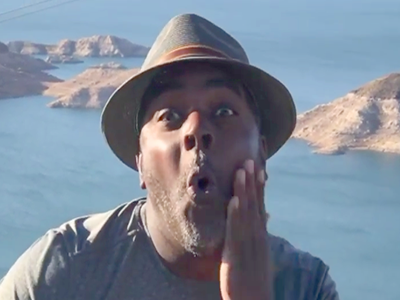
Doing the Hambone
by Devin Walker
I first learned the Hambone in the fourth grade. I’m not sure how or why, but I recall there was a Hambone competition among my schoolmates and I came in second place to my friend Gary.
It really did come to me naturally because I don’t remember anyone teaching it to me, nor do I remember watching any videos.
I love doing the Hambone because it’s an excellent example of how the human body was the first percussion instrument, which means everyone can be a percussionist. I like to call it the ultimate instrument of inclusion.
The Hambone is an African drum technique that uses the entire body as a drum set to produce different sounds. It also has a crucial place in American history, deriving its name from the resourcefulness and creativity of communities of enslaved African people. According to PBS Learning Media:
The hambone (the bone of a ham) was used to make a big pot of soup, which, with lots of water, and little scraps of vegetables and spices, was stretched to feed many families. That same hambone would be passed around and used repeatedly in different pots of soups, making something from nothing as a way of survival. The word “hambone” was then adopted as the name of the system of improvised rhythmic body music that enabled slaves to make music without their drums. (2018)
“I'm Doing the Hambone” by Uncle Devin
Slave masters in the United States outlawed physical drums as early as the 1740s, when they learned that enslaved people were using drums to relay secret messages of freedom. I gained a greater appreciation for the Hambone after learning how it was used by Africans in early America as a means of communication. I’m honored to keep this wonderful tradition alive and to share it with the next generation through the song “I’m Doing the Hambone” on my new CD, Be Yourself!
As a teaching artist, I have conducted residency programs with elementary school students on how to use body percussion to help children say their names; demonstrate an understanding of syllables and verbs; and how to count money. I also add it to my assemblies and live shows to reinforce to children that they use percussion instruments every time they clap their hands, stomp their feet, or snap their fingers to make music.
As I say to most of my audiences, “Life is a drum, so beat it!”